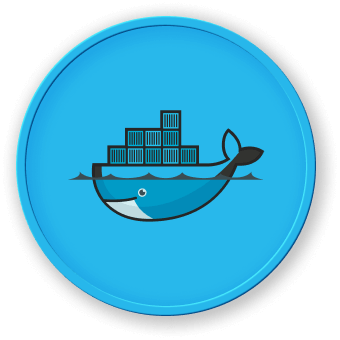Learn Docker with this comprehensive learning path designed for beginners. These hands-on Docker courses provide a systematic way to master containerization, from creation and management to orchestration. Ideal for those new to DevOps, this roadmap features practical exercises in an interactive Docker playground, helping develop real-world skills for containerizing and deploying applications.
TABLE OF CONTENTS
CONTAINER OPERATIONS
Container Operations covers various operations and actions related to Docker containers. It includes tasks such as running, listing, starting, stopping, and managing containers, as well as executing commands, inspecting, and viewing logs within containers.
Running a container involves starting a Docker container based on an image. It allows you to create and launch instances of applications in isolated environments.
Listing containers provides an overview of all Docker containers, including both running and stopped containers, on your system.
Listing running containers specifically provides information about the containers that are currently in an active state on your Docker system. This can be useful for monitoring and managing running instances.
Starting a container is the action of initializing a previously created Docker container, making it actively run.
Stopping a container involves halting the execution of a running Docker container, allowing you to gracefully terminate its processes.
Restarting a container means stopping and then immediately starting it again, which can be useful for applying configuration changes or resolving issues.
Removing a container removes it from the system, freeing up resources. It's important for managing container lifecycles.
Attaching to a container allows you to interact with its processes in real-time, useful for debugging and monitoring.
Executing commands in a container lets you perform specific actions within the container's environment without accessing the host.
Viewing container logs provides insight into the output and behavior of processes running inside a container.
Inspecting a container provides detailed information about its configuration and settings.
Displaying running processes within a container helps monitor its activity and resource usage.
Creating a container involves defining its configuration and settings based on an image, preparing it for execution.
Listing container ports reveals the network ports exposed by a container, which is essential for networking and communication.
IMAGE OPERATIONS
Image Operations covers operations related to Docker images. It includes tasks such as pulling images from repositories, tagging images, pushing images to repositories, removing images, listing images, and searching for images in repositories.
Pulling an image from a repository downloads it from a remote registry, making it available for running containers.
Tagging an image allows you to assign a custom label to it, making it easier to identify and manage.
Pushing an image to a repository uploads it to a remote registry, making it accessible to others.
Removing an image deletes it from the local system, freeing up storage space.
Listing images provides an overview of the Docker images available on the local system.
Searching for images in a repository allows you to discover and explore available Docker images.
Docker save command is used to export a Docker image as a tar file, which can be shared or transferred to another system.
The Docker load command is used to import a Docker image from a tar file into the local Docker image repository.
VOLUME OPERATIONS
Volume Operations focuses on managing Docker volumes, which are used for persisting data between containers and the host system. It includes tasks such as copying data between the host and containers and managing volumes and networks.
Copying data between the host and containers is essential for sharing files and data between the Docker environment and the host system.
Managing volumes involves creating, deleting, and inspecting Docker volumes, which are used for data storage.
SYSTEM MANAGEMENT
System Management focuses on managing the Docker system as a whole. It includes tasks such as displaying system-wide information, checking the Docker version, logging in and out from Docker registries, managing Docker itself, and cleaning up unused Docker objects.
Displaying system-wide information provides an overview of the Docker system, including resources, containers, and networks.
Showing the Docker version provides details about the installed Docker software, helping to ensure compatibility and track updates.
Logging into a Docker registry is necessary to access private container images and repositories securely.
Logging out from a Docker registry terminates the authentication session, improving security when not actively using the registry.
Managing Docker involves tasks like starting and stopping the Docker daemon and configuring its behavior.
Removing unused Docker objects, such as stopped containers, dangling images, and unused volumes, helps reclaim disk space and maintain system efficiency.
NETWORK OPERATIONS
Network Operations focuses on managing Docker networks, which enable communication between containers and the host system while providing isolation and security. It includes tasks such as creating, inspecting, and configuring Docker networks.
Managing Docker networks allows you to configure network connectivity between containers and the host, enabling communication and isolation.
DOCKERFILE
Dockerfile centers around creating Docker images from Dockerfiles, which are text files that define the configuration and instructions for building custom Docker images.
Building an image from a Dockerfile involves following the instructions defined in the Dockerfile to create a customized Docker image, tailored to specific application requirements.
